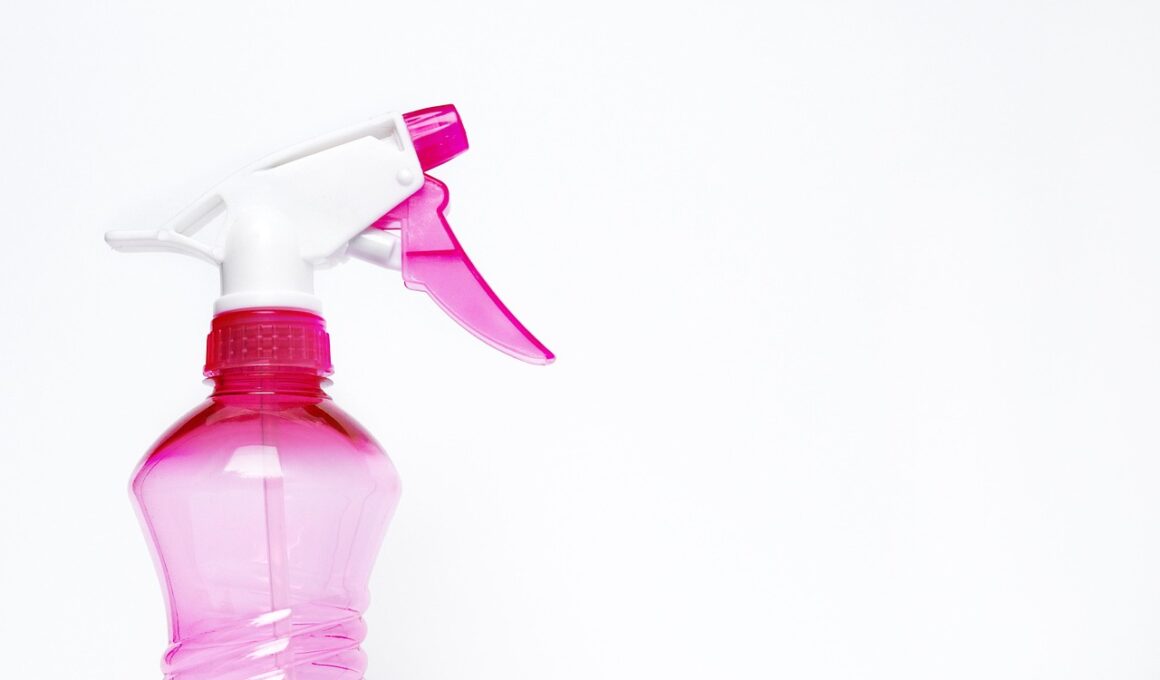How to Make the Switch to Eco-Friendly Cleaning for a Better Life
Making the transition to eco-friendly cleaning products is essential for both personal and environmental health. Traditional cleaning supplies often contain harmful chemicals that can negatively affect your health. By choosing eco-friendly alternatives, you help reduce pollution and chemical exposure in your home. These products are formulated using natural ingredients, typically biodegradable, making them safer for both you and the planet. When selecting eco-friendly cleaning options, consider the packaging as well. Products with minimal or recyclable packaging will have a substantially lower environmental impact. Organically derived cleaners can be just as effective as their conventional counterparts. It’s also crucial to educate yourself on labels by looking for certifications indicating they meet stringent environmental standards. Consider making your own cleaning solutions using common household items such as vinegar, baking soda, or lemon, which can be just as effective. Switching to eco-friendly options supports sustainable practices in the cleaning industry, which encourages other brands to adopt similar measures. Overall, your decision to use safe, non-toxic cleaners positively impacts your home and environment, promoting a healthier lifestyle.
As you begin to evaluate various eco-friendly cleaning products, understanding key ingredients helps inform your choices. Many effective green cleaners contain vinegar, which acts as a natural disinfectant. It’s excellent for cutting through grease and removing odors. Baking soda serves as a natural abrasive, perfect for scrubbing tough stains without scratching surfaces. Lemon juice contains citric acid, providing natural antibacterial power and a fresh scent. Castile soap, made from vegetable oils, is biodegradable and gentle enough for various cleaning tasks. Conducting your research is vital; look for transparent brands that disclose their ingredients. Options labeled as ‘natural’ may not always be safe; thus, checking certifications and ingredient lists ensures you make informed choices. Reading reviews and customer experiences can also guide you toward effective products that align with your values. Additionally, it’s essential to try different products since what works for someone else might not work perfectly for you. Remember that switching is a process and may take some time to find the right combinations for your cleaning routine. Embrace this journey toward greener cleaning while keeping your family’s safety as a priority. Together, small changes can lead to significant health benefits.
Your cleaning practices should evolve to incorporate sustainable habits beyond just switching products. Begin by decluttering your environment, keeping only what’s necessary. This reduces the need for frequent cleaning and creates a more tranquil living space. Minimalism in your home makes it easier to maintain cleanliness, leading to less reliance on harmful cleaning supplies. Additionally, consider the frequency of your cleaning tasks; less is often more. Instead of deep cleaning all at once, establish a regular light cleaning schedule that addresses high-traffic areas. Utilize less product with effective habits, such as using microfiber cloths, which attract dust and dirt without the need for chemical sprays. When you clean, ensure good ventilation in your home to prevent the buildup of vapors, allowing fresh air to circulate. Simplifying your cleaning routine not only promotes a healthier atmosphere but also reduces waste associated with excessive packaging. Finally, involve family members in the process, creating a shared commitment to wellness. Leading by example encourages accountability and emphasizes the importance of safe cleaning practices within your home environment.
The Benefits of DIY Cleaning Solutions
Creating your own cleaning solutions can significantly enhance your eco-friendly cleaning journey. DIY solutions often utilize simple, inexpensive ingredients found around the house, such as vinegar, lemon juice, and baking soda. These ingredients are not only effective but also safe for your health and the environment. For example, a combination of vinegar and water makes a powerful glass cleaner, able to tackle grime while being completely non-toxic. Consider mixing baking soda with a bit of water to form a paste for scrubbing dirty surfaces. Additionally, essential oils offer delightful scents and antimicrobial properties; a few drops can elevate your cleaning solutions. Crafting homemade cleaners allows you to customize them based on your preferences and needs, providing you with complete control over the ingredients used. It also significantly reduces waste generated from packaged commercial products. Furthermore, DIY recipes are widely available online, making it easier than ever to learn and experiment with different combinations. Embracing homemade cleaning solutions is not only eco-friendly but can also be a rewarding experience that fosters creativity and independence.
Though the process of transitioning to eco-friendly cleaning can seem daunting, it is more manageable with the right mindset and resources. Start by evaluating your existing cleaning supplies and gradually replacing them with eco-friendly options, rather than tossing everything at once. You don’t need to swathe your home in natural cleaners overnight. Focus on one area at a time, placing eco-friendly products where they’re most needed, such as kitchens or bathrooms. Keeping a list of acceptable products can make shopping simpler. Retailers today often stock eco-friendly options prominently, making them easy to find. Also, consider using local suppliers that prioritize sustainability, supporting your community and reducing your carbon footprint associated with shipping. Connecting with online communities focused on green living can provide both support and encouragement throughout your journey. Participate in discussions and share experiences with others who share your commitment to eco-friendly practices. Motivating efforts can often transform your cleaning and life habits, making the switch easier. Embrace persistence while learning about this transition toward sustainable living by valuing each small step taken for both your family and the planet.
Evaluating the Impact of Your Choices
Measure the effectiveness of your eco-friendly cleaning efforts by evaluating both immediate results and long-term benefits. Assess clean surfaces regularly to confirm that your natural products suffice, ensuring a clean and healthy environment. Tracking your family’s reaction to the changes is vital; observe any differences in sensitivities or allergies after switching to safer products. You might notice a reduction in headaches or respiratory issues previously triggered by commercial cleaners; these improvements can underscore your commitment to eco-friendly choices. Another important factor to consider is the broader environmental impact of your decisions. Choosing biodegradable ingredients and products means less stress on landfills and water systems. Moreover, calculate the reduction in chemical use associated with your switch towards sustainable solutions and be proud of this positive evolution. Staying informed on sustainability practices can further guide your learning journey. Seek out new eco-friendly tips or sustainable resources, making sure you’re continuously improving and adapting your cleaning regimen. Over time, your efforts will not only yield a safer, healthier home but also inspire those around you to pursue similar eco-conscious practices, creating a ripple effect of positive change.
In conclusion, adopting eco-friendly cleaning products is a simple yet powerful step toward enhancing your overall quality of life. It promotes not only a healthier home environment free from toxic substances but also contributes positively to the planet’s well-being. By integrating natural cleaning methods into daily routines, you foster a healthy balance between hygiene and sustainability. Remember that every effort matters, no matter how small; each eco-friendly choice contributes to larger environmental goals. Encourage family and friends to make similar transitions by sharing your knowledge and experiences. Join groups supporting sustainable cleaning practices to help create a community dedication to healthier lifestyles. Finally, rights to enjoy cleaner living spaces positively affects mental clarity and well-being, as reducing clutter and toxins creates a physical space free from stressors. Together, these collective actions drive a path toward ecological responsibility, which can inspire transformation in both personal habits and societal norms surrounding cleanliness products. Ultimately, embracing eco-friendly cleaning solutions not only beautifies your home but also empowers you to be a steward of the environment for future generations.
Embracing an Eco-Friendly Lifestyle Beyond Cleaning
As you shift to eco-friendly cleaning methods, consider expanding that commitment to other aspects of your life. Sustainability encompasses a broader lifestyle approach, including aspects such as dietary choices, energy consumption, and transportation. Start by evaluating your food sources, opting for local, organic produce to decrease carbon footprints associated with transportation. Reducing meat consumption can also significantly benefit the environment while promoting personal health. Additionally, consider energy-efficient appliances and mindful energy consumption habits, like turning off lights when they are not being used. Public transport, biking, or walking instead of driving reduces both emissions and personal expenses. Reducing plastic use can massively impact the environment; carry reusable bags, bottles, and containers to minimize single-use plastic waste. Embracing these changes creates a holistic approach to eco-conscious living which complements your cleaner home while fostering positive habits. Educating yourself continuously and being open to new sustainable practices will ensure you remain engaged on your green journey. By sharing your experiences with others, you can motivate collective action, creating a larger movement toward a sustainable future for everyone. Your commitment can foster significant change within yourself and beyond.


